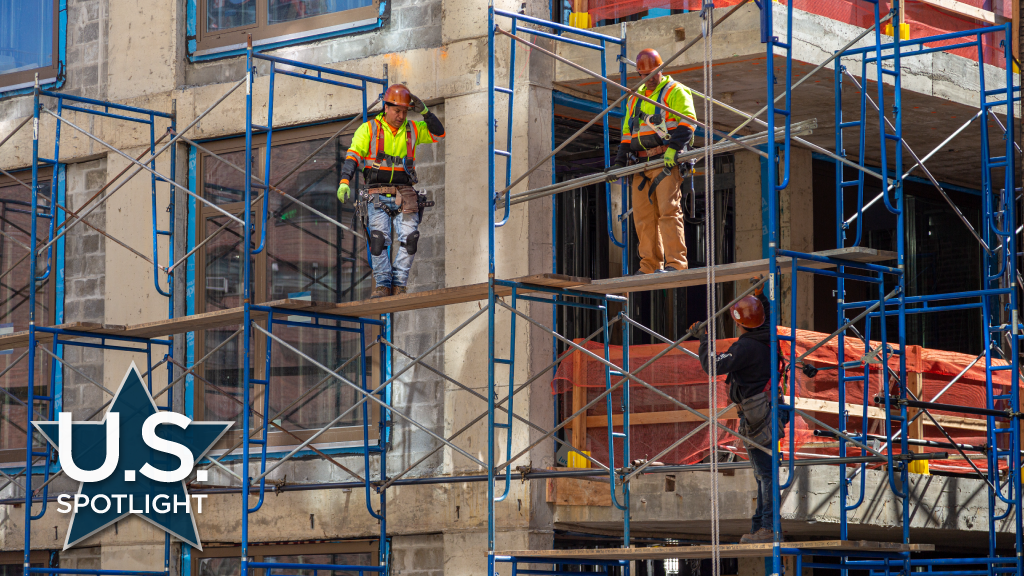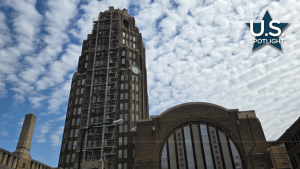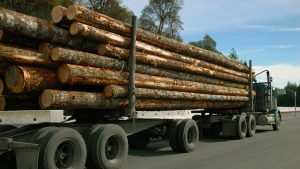Scaffolding contractors in New York City seeing a rise in “suspicious” injury claims by their workers are concerned a safety law written in 1885 to protect workers might be manipulated to commit fraudulent activity.
The 138-year-old Scaffold Law, section 240 of the New York State Labor Law, was designed for worker safety as the city entered its first highrise boom. Today it serves workers injured at heights.
But some members of the New York City Special Riggers Association (NYCSRA) report an increase by mostly new workers who “fall from a very, very low height,” sometimes on unobstructed stairwells inside a building, says Michael DiFonzo, president of Central Construction Management, LLC and vice-president of the NYCSRA, which has about 100 members working on tall buildings.
“They appear to be a staged fall where there are no witnesses.”
DiFonzo’s company has seen a pattern of suspicious claims recently.
He points out 100 per cent liability is on the building owner and the contractor for which the worker is employed.
“If the employee is drunk, on drugs or lied about his training…whatever, we cannot defend our case.”
Suspicious claims are an expensive problem for contractors and building owners.
“Anytime anybody falls off a step ladder…or anywhere, height is an issue. It can result in a six-figure claim,” says NYCSRA president Veronika Sikorski.
DiFonzo adds claims of $2 to $3 million are not rare.
“We’d just like to be able to defend ourselves in a court of law. If you can’t defend it, it just becomes a settlement, dollars and cents issue,” he says, pointing out the increased insurance costs result in higher building costs which impacts housing affordability in a city with a growing scarcity of affordable housing.
DiFonzo says injured workers can’t claim ignorance of safety hazards because the city requires all workers to have completed more than 40 hours of safety training, including a 30-hour Occupational Safety and Health Administration (OSHA) course before they can step foot on a construction site.
Sikorski says some of the association’s members report an increase of injuries of 200 to 300 per cent in the past few years.
One member experiencing an uptick in claims in the past two years is Hobo Construction, a 30-year-old family-run scaffolding contractor.
Usually the claims are for a minor injury, such as a trip or fall from a short height, says Jesus Rico, director of field operations.
“One guy sprained his ankle walking down stairs and now he is suing the building (owner) and us,” he says.
Rico, who is secretary of the NYCSRA, explains he faces up to six to 10 claims a year. His insurance deductible is $10,000.
“My workmen’s comp actually dropped me last year because of all these claims,” says Rico, who has since found a new carrier.
Still, Hobo Construction faces annual insurance premium hikes of five to 10 per cent.
Rico says other members of the association are also reporting suspicious claims are rising.
“They started to realize there is a trend here…and it is getting out of control.”
DiFonzo says he’s concerned that there is “a larger force” at play, orchestrated by “an organized directive” to commit fraud.
“A lot of the industry is now speaking and we see patterns in the claims, in the way in which people are falling,” he says.
“When you see a pattern and then you see a certain law firm they are using or a certain doctor they might be using, it seems very point loaded in the type of injury,” DiFonzo adds.
The industry needs to collect data on the suspicious injury patterns and take it to law enforcement “to see if there is something larger here,” he says.
“There might not be (anything fraudulent) but someone should investigate these very suspicious claims.”
New York is the only remaining state with the 19th century law still on the books.
Sikorski says Illinois “saw a dramatic decrease in claims” when its scaffold law was “reduced” in the 1990s.
Beyond the Scaffold Law, workers have other avenues of health and safety protection such as through the federal Department of Labor’s OSHA, she points out
An organized lobby to reform the Scaffold Law has met with little success in New York. Stubborn resistance to abolishing it might because “getting rid of anything under the safety umbrella is politically non-negotiable,” Sikorski adds.
She says the cost of construction is much higher in New York than neighboring states largely because of the price of liability insurance.











Recent Comments